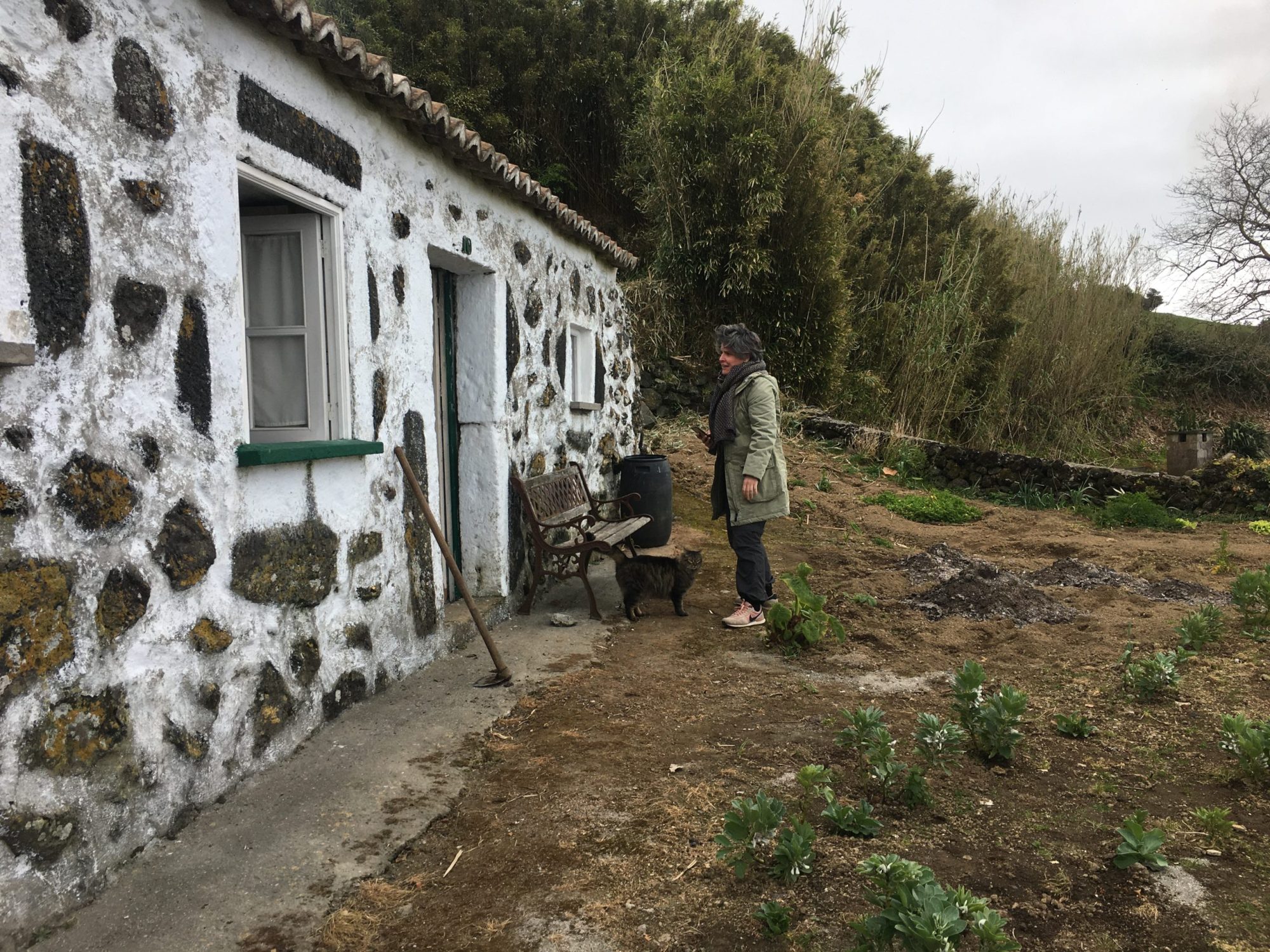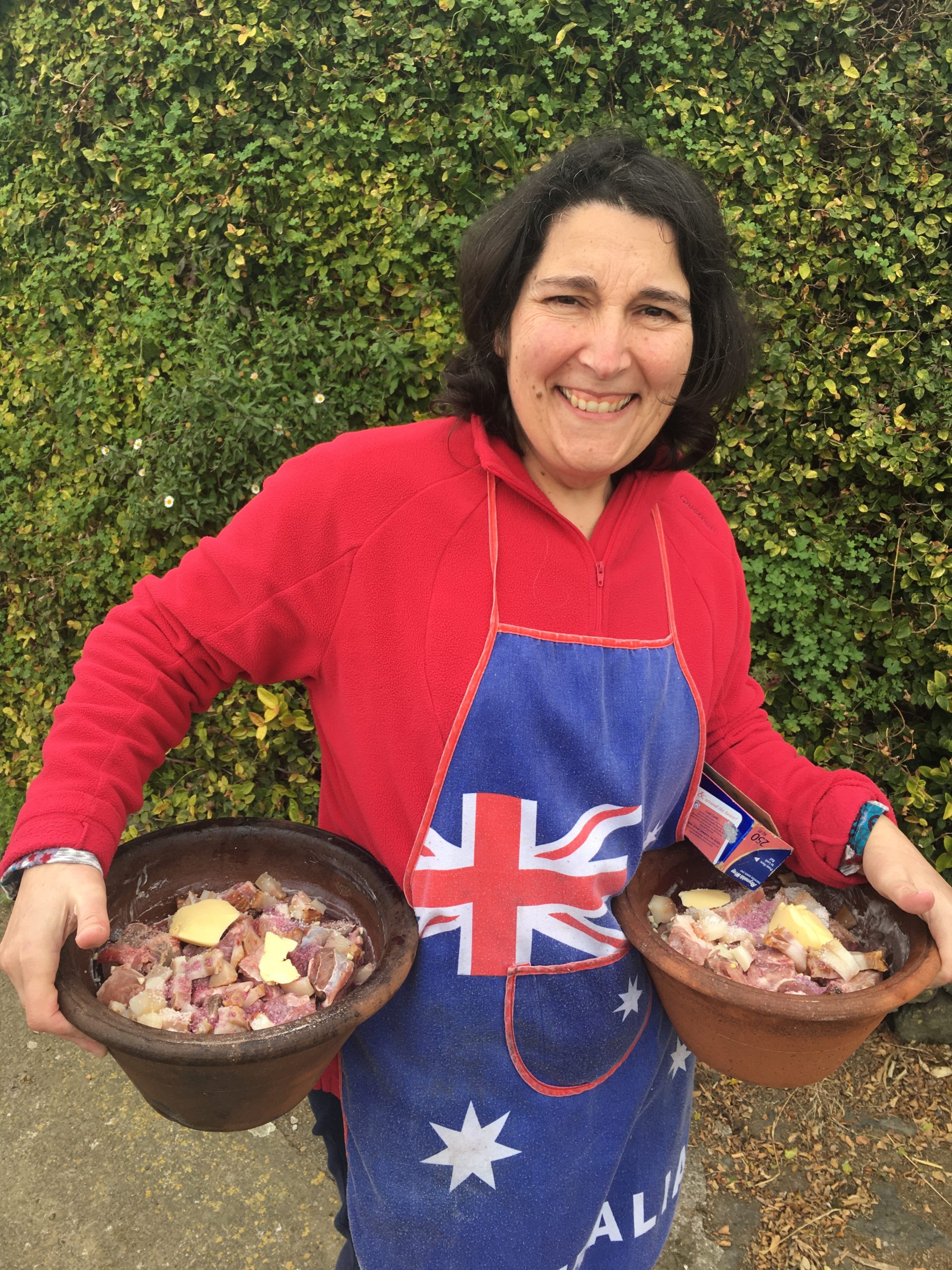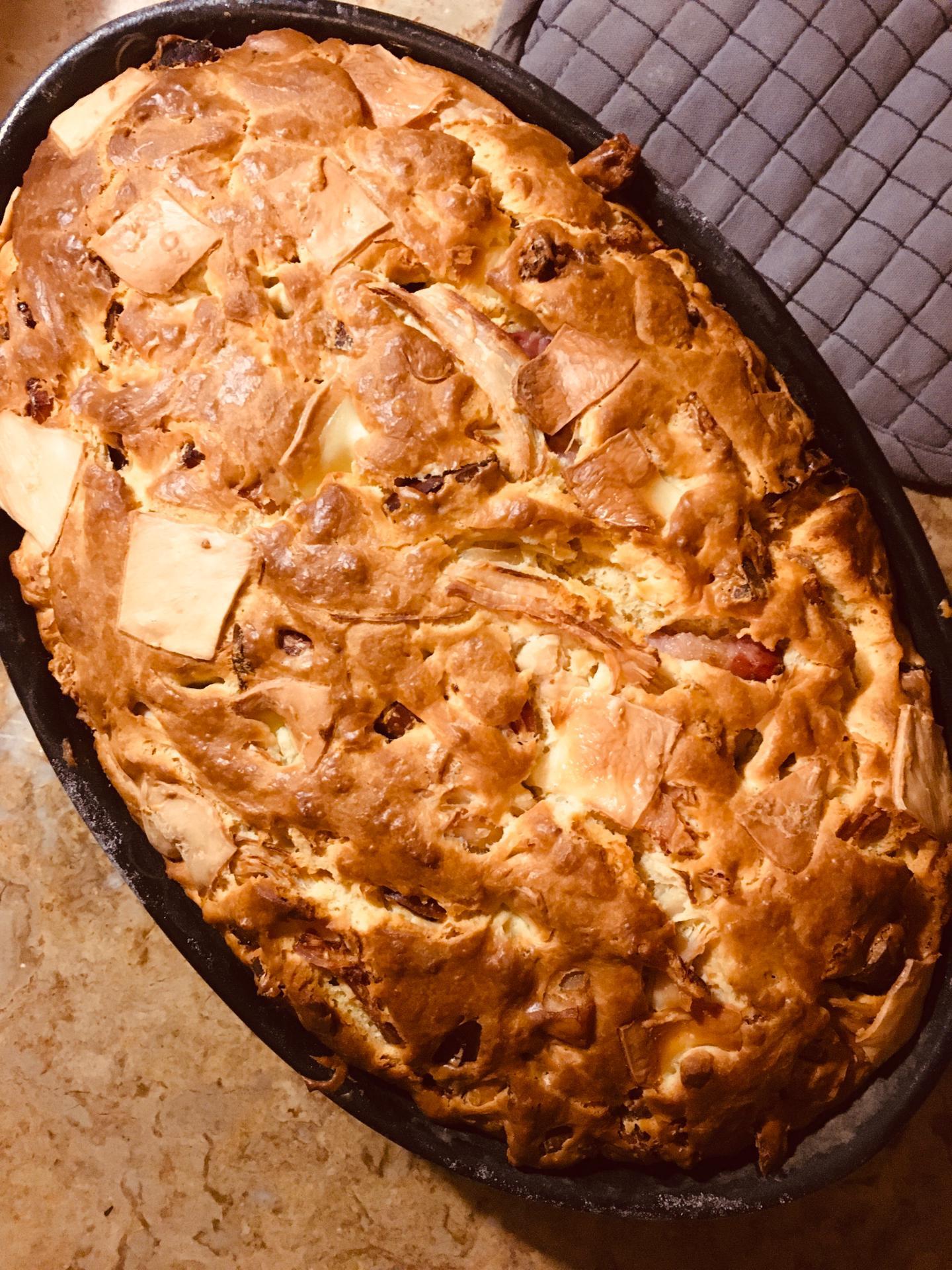PORTUGUESE EASTER SWEET BREAD AND HOLY SPIRIT SOUPS

In Portugal, the Easter season brings out a culinary delight in traditional dishes.
But Easter in Portugal is part of a wider scene, namely the Spring cycle, in which we can also include the cult of the Holy Spirit (Festas do Espirito Santo), celebrated mainly in the Azores islands.
Whatever the region of Portugal or the Portuguese community around the world, Easter festivities, are characterized by hearty meals and ceremonial gifts, particularly food, such as folares, lamb stews, almonds and also soups. Portugal food customs are at their best and a party is held in the form of gift-giving and sharing, bread, meat and of course, wine!
 Holy Spirit Soups
Holy Spirit Soups
The cult of the Holy Spirit is a religious sub-culture stemming from catholic beliefs. Franciscan inspired, their rituals, date back to the time of D. Diniz and Queen Santa Isabel (14th-15th century) and started in mainland Portugal, namely in Alenquer, Tomar. The proliferation of the cult of the Holy Spirit appeared early in the Azorean archipelago (18th century) becoming a unifier of the population in the various islands.
From then on, with Azorean emigration, the cult was transplanted to Brazil and then to Massachusetts, Rhode Island, Hawaii as well as to Ontario, Quebec, and British Columbia.
Currently, the Holy Spirit celebration has its strongest expression in Azores islands, although it is also visible in the center and north of Portugal. Outside Portugal, it is represented by the Portuguese diaspora, namely in Portuguese communities in the United States, Canada and in different parts of Brazil.
The Empires of the Divine Holy Spirit are one of the most striking features of Azorean identity. They’re normally small structures, with a distinct architectural style where the faithful conduct their rituals. Their architecture varies from tile-roofed buildings (such as in Santa Maria) to chapels with ornate facades, crowned with an imperial crown (in Terceira).

Nélia brings the seasoned meat to be cooked
Annually, the Holy Spirit festivities take place all over the Azores archipelago, every week from Easter until Pentecost Sunday or Trinity Sunday.
A week ago, I flew to the island of Terceira, to prepare our Azores island tours and trips , and landed nearly right in the center of these festivities. Lisbon are the Azores are separated by two hours of flight, a minor effort to such a rich destination.
Azores food is a must and these convivial celebrations are a unique opportunity to taste this unique piece of Portuguese traditional food and culture.
Unfortunately, as a result of the measures imposed by the current pandemic, these celebrations, which typically gather hundreds of people around gastronomic dishes made by local communities, are not authorized. ‘Next year, for sure!’, says Nélia excitedly, a local Azorean lady you will know in a few minutes!
In regular years, after a sequence of ceremonies – which include the procession (on Easter day), the coronation, the bodo (Sunday following Easter) and the esmola (charitable offering) – neighbors, family and friends gather for a ritualized meal that includes guests who took on a promise to the Holy Spirit. We call it função (function).
To organize this meal, mordomos (butlers) are chosen each year for the following year. They are given the insignia of the Divine Holy Spirit (the crown and plate, the scepter, in some places a sword, the image of Queen Santa Isabel, wooden sticks and a flag) that they exhibit and keep in their home until the celebrations. José was, a mordomo, several times, in the Serreta area, in the western part of Terceira island. He does not hide the work he did, nor the joy and pride it gave him.
The mordomo is responsible for coordinating the collection of funds for the feast, the organization of the event, the people invited, the purchase of meat, the Azorean bread, the blood pork sausages, the wine, etc. and is usually seen as the supreme authority during the event. José tells us, how they cooked for hundreds of people with money collected during the esmola.

Silvia in front of the wood-fire oven
Normally, the money is never enough, but they can always count on the generosity of the producers and artisans (the local baker, the local beef producer) all together to accomplish this meal and ceremony in the best way! Nélia, José’s wife, says that invariably, the meat seems to always multiply during the preparation process since they can provide so many soups and be able to serve all those present.
At the function ceremony, the Holy Spirit Soup is the gastronomic star, here representing an important feature of Azores cuisine. From all the Portuguese soups this is the one that better symbolizes community sharing and it’s accompanied by hymns to the Holy Spirit.
This Portuguese bread soup, consists of a meat broth poured on top of buttered bread and is freshly seasoned with mint leaves. It’s accompanied with the cooked meat used in its preparation, Portuguese sweet bread (named massa sovada) and sweet rice sprinkled with cinnamon
Contributing to several types of soups, are different methods on the preparation of the meat broth but also the availability of side dishes or the consistency of the soup.
On the island of Terceira, the Holy Spirit Soup is accompanied by an alcatra, a plate of meat cooked in red wine in an earthen pot. On the other hand, in Faial island, this soup is traditionally served with vegetables.

José seems to hold two babies in his arms!
In celebration and honor of the Festival of the Holy Spirit I am sharing a recipe for this soup, courtesy of Nélia. She wanted us to learn and replicate this recipe at home, perpetuating these Portuguese family traditions. Azores food and culture are so tasty and interesting that we joyfully accept Nélia’s proposal and decided to share it with you.
We had it with a nice red wine from Terceira in the traditional clay wine bowls but they allowed me to bring the ‘concurrence’ to the table: Pico Wine. A wine produced in another Azorean island from vineyards that are part of UNESCO World Heritage site since 2004.
Holy Spirit Portuguese Soup Recipe
For 6-8 persons
2.1 lbs/1kg beef roast
3 lbs/1.3 kg beef shank
1 linguiça, cut in half
2 medium onions
2 heads garlic (all cloves attached)
3 cinnamon sticks
1/4 liter tomato paste
1 tbsp pepper
1 tbsp cumin
2 bay leaves
3 tbsp unsalted butter
6 big leaves collard greens
3 liters water and
extra water during cooking
Fresh mint leaves
2 Home-style crusty bread
- Season the meat with the salt the day before and store it in the refrigerator.
- Before cooking it, wash the meat to remove the salt. Place the meat in the pot with water, until all the meat is submerged (just above, covering the meat).
- Remove the impurities that come up during the boiling process, by skimming these off with a small sift. Keep cooking at a moderate boil (between medium-high and high).
- After 30 minutes add the onions, garlic heads, cinnamon, pepper, cumin, bay leaves, and tomato paste.
- Add more water in case it reduces a lot until it is at the same level you started with.
- After two hours, add the butter and the collard greens.
- While the meat’s cooking, cut the bread into large handful-size pieces and cover the bottom of a large, shallow serving dish with the bread slices. Lay the mint leaves on top of the bread slices.
- After 3 hours of cooking, check to see if the meat is tender. If you find the meat a bit hard, cook longer.
- Once it is cooked remove the meat from the pot, cut it into smaller pieces and place it on shallow serving dishes with the collard greens.
- Ladle the content from the stockpot equally on top of the bread, covering all the bread and serve while hot. The bread will soak up most of the broth.
Enjoy one of the emblematic Azores dishes!
Folar, a word with many meanings
Another Portuguese eating habit associated with Easter in Portugal is the folar.
For now let’s just say that the folar is a type of bread, which varies from region to region and, surprise…! Depending on the regions, it may be sweet, which is the most common version, or it can be savory incorporating meat, sausage or sardines!
If we analyze the meaning of the word folar, in a more complex way, we discover that folar means also the gifts that, traditionally, the godfather gives to the godson for Easter, which can be the cakes but also something else not food-related. It’s common to hear “he gave me the folar” if a godson is referring to a gift his godfather gave him, which can be a piece of clothing, money, or any other type of present. The obligation of giving a Folar to the godsons ends when they become adults (18 years old) or when they marry.
But folar, as we know can also be the bread given to the local priest when he goes to the village, visiting and blessing the parishioners’ house, during the paschal visit.
Going back to our edible folar, we will find different kinds depending on the region of the country.

Broínhas de Erva Doce
Portuguese sweet bread (Folar)
The most common in Portugal is a sweet bread of wheat flour, milk, olive oil, eggs, milk, lard, yeast, sugar, spiced with cinnamon and fennel (pimpinella anisum). On top, they all contain hard-boiled eggs held in place by a cross of bread dough which is also a symbol of fertility, rebirth and resurrection, stemming from the Pagan festival Oestre.
This is the folar we can find in all of the south of Portugal such as the Alentejo and Algarve, but also in Lisbon and this is a common one godfathers give to their godsons.
Still in the sweet section, as another Easter recipe, in the north we will find the broínhas de erva doce (small dry cakes with fennel), done with eggs, milk, flour, butter, sugar, fennel (pimpinella anisum), salt, sprinkled with white flour. These are normally served as a dessert after the Easter lunch.
But if we head to the Minho region and around Porto city, we will discover that the sweet folar, practically nonexistent, is replaced by pão de ló, an essential sweet in this region during Easter, best represented in some specific Portuguese cities, like Ovar, Margaride and Alfeizerão.
What stands out at the end, is that the word folar is strongly associated with a ritual of gifted solidarity, conviviality, friendship and reconciliation, deeply rooted in Portuguese society.
Folar do Algarve Portuguese sweet bread Recipe (South of Portugal)

Portuguese Sweet Folar
Ingredients
800 grams of wheat flour
100 grams of margarine
35 grams of baker’s yeast
250 grams of white sugar
3 eggs
2 decilitres of warm milk
salt, cinnamon and fennel as needed
3 or 4 eggs to decorate the folar
Preparation
- Dissolve the yeast with a bit of warm milk and add a bit of flour. Mix it (with your hands) into a very moist ball and let it rise for 20 minutes.
- Knead the rest of the flour with the sugar, the milk and the eggs, and add the yeast ball. Knead it very well. Add the margarine, the salt (just a pinch) and the spices.
- Batter until the dough easily unsticks from the container. Let it ferment in a bowl, covered with a cloth in a safe environment with a mild temperature, for about 3 hours.
- Take the dough, reserve a small part (guess how much after reading what it will be used for) and make a mildly squashed ball with the rest (the bigger part), where you should put the already boiled eggs (cooled).
- With the reserved dough, make some strings which you place around the eggs, for decoration.
- Brush the folar with whisked yolk and let it rest for a bit. Bake it in a hot oven (200 degrees C) until it’s well cooked and takes a brownish tone.

Savory Folar or bola
Savory folar or bola
In the north of Portugal, mainly in Trás-os-Montes, we will easily find the savory folar, the most popular being the Folar de Chaves. It’s made with wheat flour, yeast, eggs, milk, olive oil or butter, several types meat: pork meat (cured meats like chorizo, ham, blood pork sausage, salpicão) and others like chicken, veal, turkey. In some cases, sardines are also included. This savory folar can also be named bola.
The shape can be round or rectangular depending on where they are cooked. They can be taller or shorter (like the bola from Barroso) and differentiate in size depending on the region.
The diversity of the recipes are expressed in the number of names this bola can hold: folar de carne, bola de carne, bola sovada, empada, bolas da sertã (these last ones are fried). Tradition says they should be cooked in a well-heated oven in the firewood made of broom embers.
Savory Folar de Chaves Recipe (North of Portugal, Trás-os-Montes province)
Ingredients
500 gr of fermented bread dough*
6 eggs
1 dl of olive oil

Homemade Bola or Savory Folar
75 gr of lard
100 gr of ham
100 gr of fresh bacon
500 gr of smoked sausages, veal, pork (feel free to choose the ones you prefer)
lard to cook
kosher Ksalt
egg yolk and flour as needed.
Fermented dough: dissolve the yeast (8g) in cold water (325ml) using a whisk. Add the flour (450g + 75h rye flour), then salt (10g). Knead for 10 minutes. Cover the bowl with plastic wrap and leave to rest overnight in a refrigerator at 5 °C.
Preparation:
- Mix the dough with the eggs, the olive oil and the melted lard.
- Season it with salt and mix everything with your hands until it’s well mixed
- If you need add bits of flour until it’s good enough to stretch.
- Fry the meats aside with lard.
- Split the mixed dough in 4 or 5 parts, using the biggest piece to cover the bottom as well as the sides of a round and high mold, previously covered with lard.
- Add alternated layers of meat and dough and finish with a layer of dough.
- Press the borders of the dough to stick to the container and brush the surface with the whisked yolk.
- Let it rest and rise for 2 hours and bake it in the oven (200 degrees).
Now, get to work and enjoy this weekend with your family and friends!
Share your cookings with us on Instagram or Facebook!
Photo credits: Natacha Dias and Sílvia Olivença
